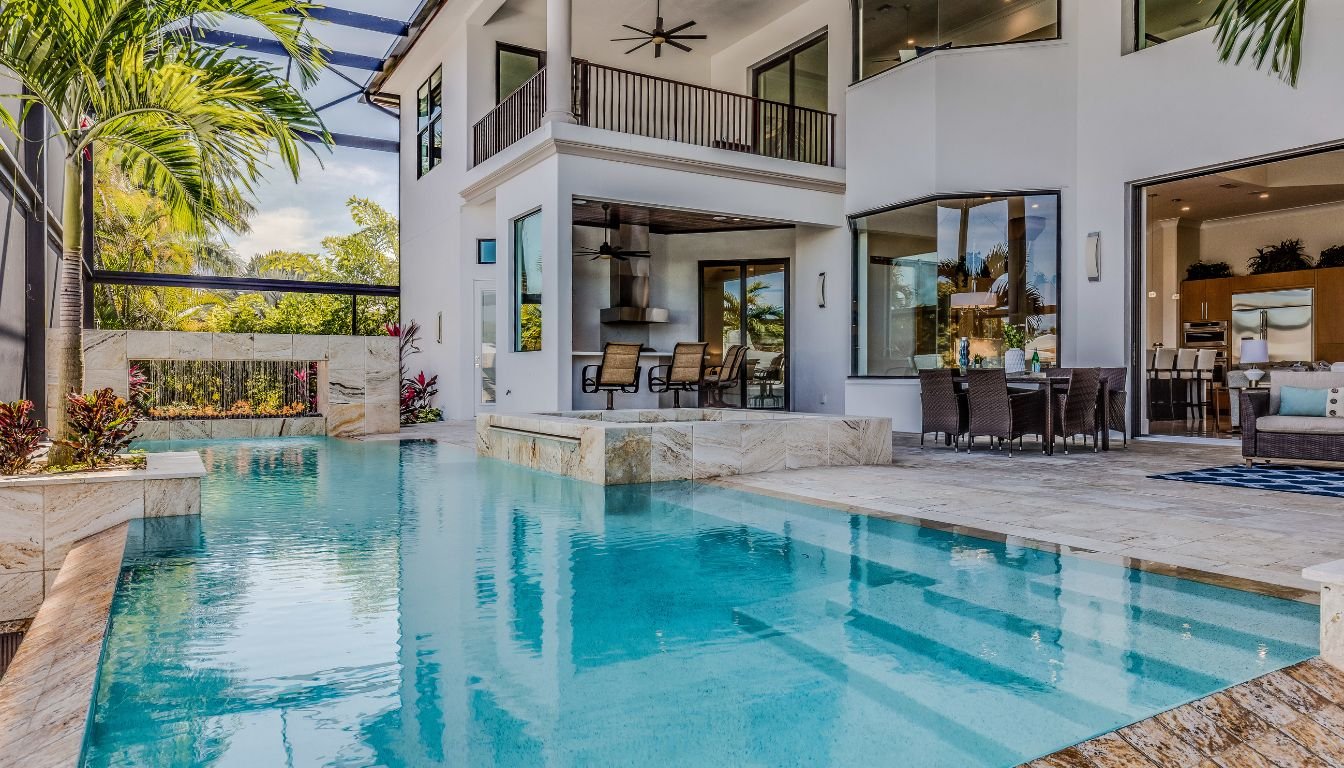Imagine stepping into your backyard and seeing a sparkling pool where laughter fills the air, and the sun shines on clear water.
Building the perfect pool is more than just digging and laying tiles; it’s a process that turns your outdoor space into a personal paradise, notes Safe House Property Management team.
Whether you picture a modern design or a cozy retreat, this guide will take you through each step—from planning and budgeting to picking the right materials and final details of pool construction in TN. Get ready to make your swimming dreams come true!
Why Building a Pool Is a Great Idea for Your Home
Picture walking into your backyard and seeing a beautiful pool with blue water. Imagine friends and family having fun splashing around on a hot day, or you relaxing beside the water with a book. Building a pool can turn your outdoor space into a special place that adds value to your home while creating lasting memories.
A pool is more than just a nice feature—it improves your lifestyle. Whether you’re looking for relaxation, fun, or exercise, a pool offers endless options. But where do you start? The process may seem hard at first, but with good planning, you’ll be on your way to creating the perfect pool right in your backyard. Let’s dive into this simple step-by-step guide!
Step 1: Deciding on the Type of Pool (In-ground, Above-ground, Natural)
Choosing the right type of pool is important. It sets the stage for your whole project. Start by thinking about your lifestyle and preferences.
- In-ground pools give a permanent, fancy feel. They can be customized to fit any backyard look. There are many materials and finishes to suit your style.
- Above-ground pools are usually cheaper and faster to install. They’re also portable, so they’re great if you might move or want a pool just for summer.
- Natural swimming pools are eco-friendly and blend with nature. They use plants for cleaning the water instead of chemicals, creating a peaceful spot in your yard.
Think about maintenance too—some pools need more care than others. Consider these factors to help you choose the right one for your space.
Step 2: Planning and Designing Your Pool (Size, Shape, and Location)
When planning your pool, size and shape are key. Think about how you’ll use it. Will it be for lounging, swimming, or hosting parties? A bigger pool is great for gatherings, while a smaller one may fit a cozy backyard better.
Next, choose the shape. Rectangular pools look classic and work well for lap swimming. Curved designs feel more natural and blend with landscaping.
Location is also important. Make sure there’s plenty of sunlight to warm the water but also consider some shade from trees or structures. Privacy is key, so choose a spot that’s private but still gives you great views.
Step 3: Getting Permits and Approvals
Before you start digging, make sure you get all the permits you need. Every area has rules for pool building. If you don’t follow them, you might get fined or have to remove the pool.
Check with your local building department to find out what’s required. This could include zoning rules and safety measures. You may need to submit detailed plans showing your pool layout and property lines.
If you live in a neighborhood with a Homeowners Association (HOA), check their rules too. They may have stricter guidelines than local laws.
Be patient, as approval can take some time. Getting this step right will give you peace of mind.
Step 4: Excavation and Groundwork
Excavation is the process of digging the area where your pool will be. Before starting, make sure all utility lines are marked so you don’t accidentally hit them.
Once the area is clear, heavy machinery will dig based on the size and shape of your pool. It’s exciting to watch the ground change as your dream pool takes shape!
Groundwork involves creating a strong base for your pool. Whether it’s in-ground or above-ground, a solid foundation is key to making sure your pool lasts.
After the ground is level, the area will be inspected before construction continues.
Step 5: Installing the Pool Structure (Fiberglass, Vinyl Liner, Concrete)
Installing the pool structure is a big step. You have three main choices: fiberglass, vinyl liner, and concrete.
- Fiberglass pools are pre-made shells that are quick to install and easy to maintain. They have a smooth surface that resists algae growth.
- Vinyl liner pools can be customized with different colors and patterns. However, be careful not to puncture the liner.
- Concrete pools take longer to install but offer flexibility in size and shape. They’re durable but need more upkeep over time.
Each option has its pros and cons, so choose based on what fits your lifestyle.
Step 6: Plumbing and Electrical Work
Once the pool structure is in place, it’s time for plumbing and electrical work. Proper plumbing ensures good water circulation, filtration, and heating. High-quality materials are a must to avoid leaks later on.
For electrical work, lighting is key for safety and atmosphere. Install underwater lights and other features like waterfalls or heaters if needed.
It’s important to follow local codes. Consider hiring a professional like Silverline Pools if you’re unsure, as mistakes can be costly.
Step 7: Final Touches (Decking, Landscaping, Lighting)
After the pool is built, focus on final touches like decking, landscaping, and lighting.
- Decking options range from classic wood to modern materials. Choose what suits your style and climate.
- Landscaping adds life to your pool area. Pick low-maintenance plants that thrive in your region.
- Lighting ensures safety and sets the mood. Underwater lights and pathway lights add to the ambiance.
Seating is also important. Add lounge chairs or a shaded area to create a relaxing spot. Thoughtful design will turn your pool area into a beautiful retreat.
Step 8: Filling and Balancing Your Pool Water
Once your pool is done, fill it with water. You can use a garden hose, but if you want to swim sooner, consider using a water delivery service.
Check for leaks as the water fills up. Once the pool is full, balance the water by testing the pH, alkalinity, and chlorine levels. This will keep your pool clean and safe.
Use test kits to make sure everything is in the right range. Take your time with this step for clear, sparkling water.
Maintenance
To keep your pool clean and safe, regular maintenance is essential. Start with weekly cleaning—skim the surface for debris, vacuum the bottom, and brush the walls.
Check water levels often, including pH, chlorine, and alkalinity. Make sure the filter system is working properly and clean or replace filters as needed.
Seasonal tasks like closing the pool for winter or preparing it for heavy summer use are also important.
With regular care, your pool will stay beautiful and ready for fun all year round. Enjoy your new backyard oasis!







